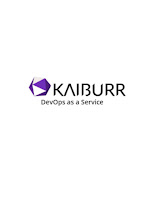In today’s fast-paced digital landscape, integrating
security measures early on is essential. This concept, known as shift security
left, involves embedding security practices into the initial stages of
software development rather than waiting until the end. For companies like Kaiburr,
focusing on proactive security is a key strategy for ensuring robust, risk-free
applications.
What Does it Mean to Shift Security Left?
The term shift security left means incorporating security
measures during the earliest phases of the software development lifecycle
(SDLC). By shifting left, developers address vulnerabilities as they code,
ensuring risks are minimized before the software reaches testing or deployment.
This approach emphasizes prevention over reactive fixes, ultimately saving time
and resources.
Key Benefits of Shifting Security Left
- Reduced
Costs: Fixing vulnerabilities early in development is much less
expensive than post-deployment remediation. By addressing security issues
before they evolve, you’re saving the business valuable resources.
- Enhanced
Software Quality: Integrating security measures during coding can lead
to more robust, high-quality software. A shift security left approach
ensures that code is not only functional but also resilient against
potential threats.
- Improved
Compliance: With security built-in from the start, applications are
more likely to meet regulatory standards. This proactive compliance with
security protocols is critical for organizations that manage sensitive
data or work in regulated industries.
- Faster
Time to Market: Addressing security concerns early prevents delays
that could occur during final testing stages, helping your product reach
the market faster and with confidence.
By adopting a shift security left approach with Kaiburr,
development teams can efficiently embed security protocols, reduce costs, and
accelerate release timelines. This strategy not only secures the development
pipeline but also fosters a culture of proactive security, setting a foundation
for building secure, reliable applications in today’s competitive market.
Embracing the shift to left aligns your software with both business objectives
and security best practices, ensuring long-term resilience.



.jpg)


0 Comments